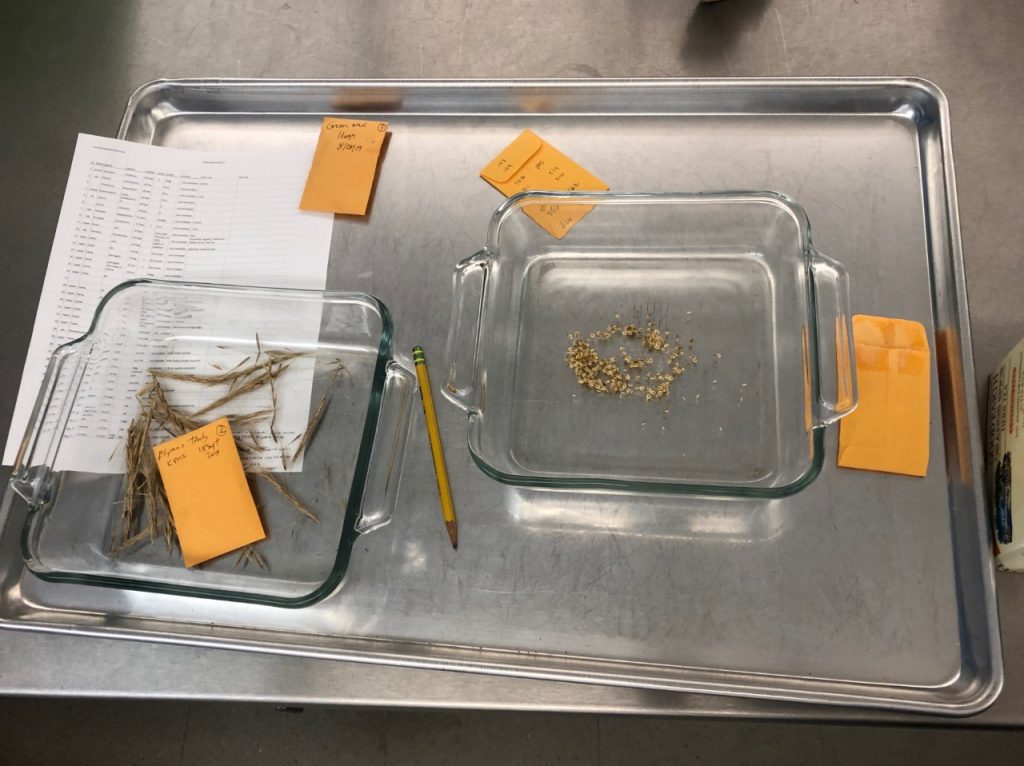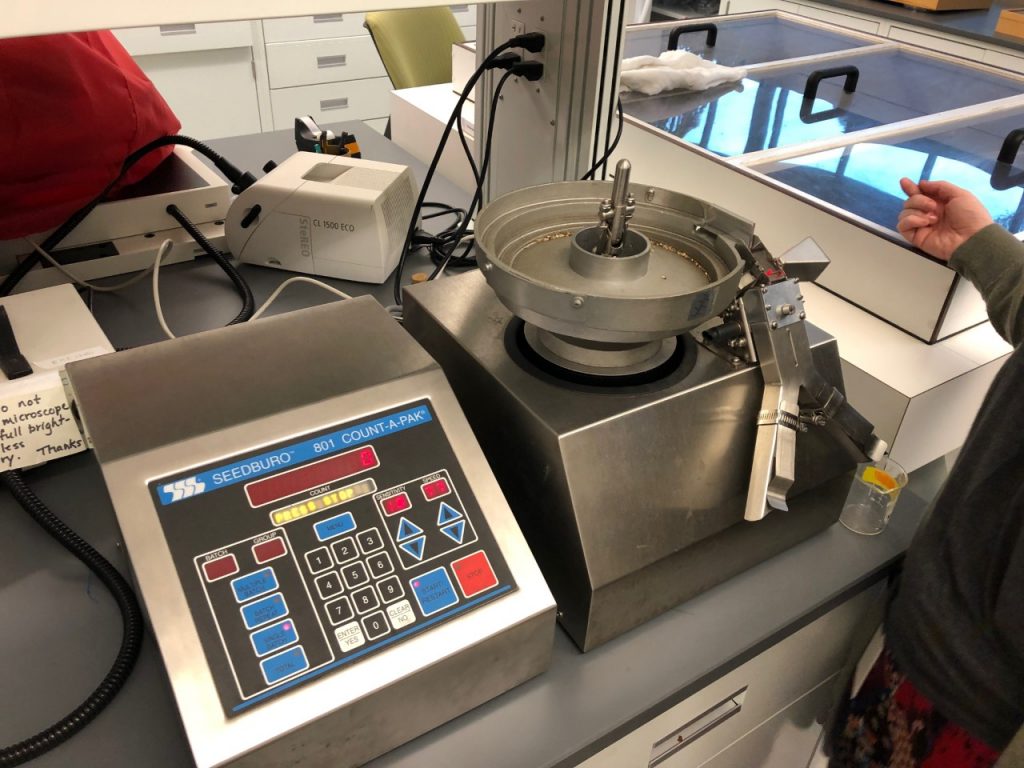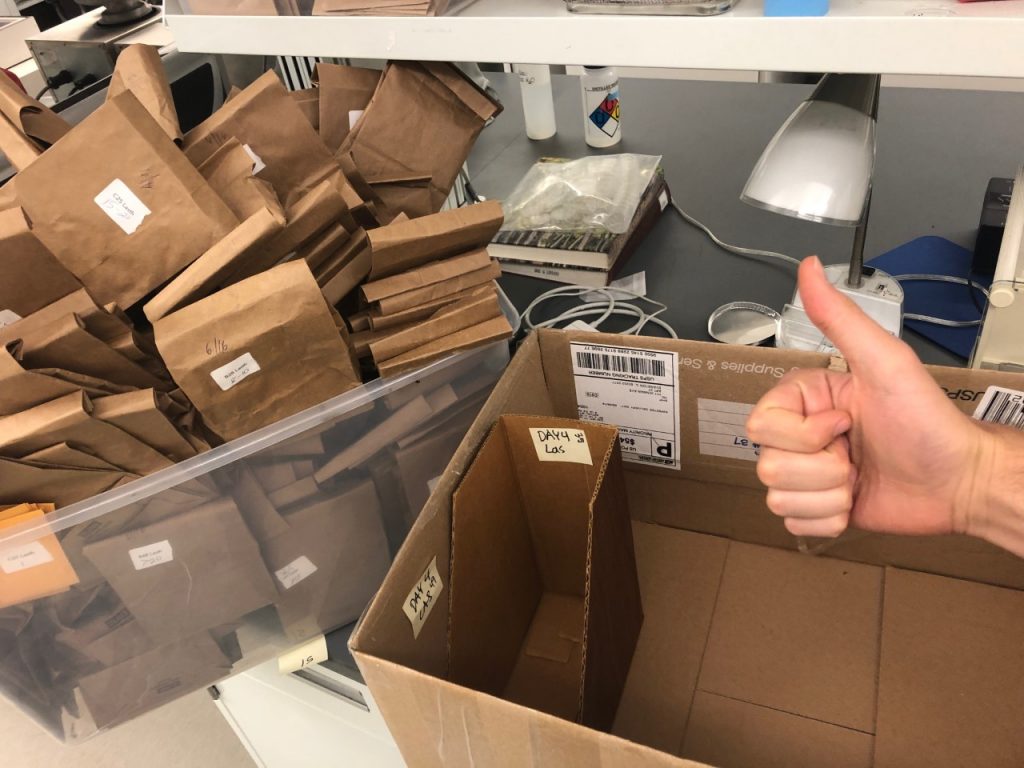Howdy-Ho Floggerinos!
Today I was challenged to count seeds from a few different species of plants. The intention behind this assignment I believe was to teach me how to utilize the Lab’s SeedBuro™ 801 Count-A-Pak® using a variety of seed types. However, the seed-counter had other plans, absolutely refusing to count in spite of our sweet pleads and gentle coaxing. Without the mechanized aid of the SeedBuro™ I was forced to improvise. First, in classic American fashion, I tried brute force, emptying each pack into a Pyrex dish and counting every seed by hand. This worked well for the first few packs of 50-60 seeds but I soon found myself overwhelmed as the seeds began to number into the hundreds. For the large seed packets, I decided to deduce a count by dividing the total mass by that of a single seed mass (SSM). I found the SSM by taking 5 random samples of 10 seeds from the packet in question, weighing them, and averaging those masses. I then divided that average by ten which gave me my SSM. Finally, I took the total seed mass and divided it by the SSM which gave me a seed count. This procedure allowed to me to count a 2,390 Carex seed sample in just a few minutes.


After an afternoon of seed counting I returned to work weighing biomass and finally completed weighing the contents of the second Day 4 cardboard box. I have now collected the biomass data from over 420 plants. I am very excited to begin learning how best to process and analyze all this data!


Leave a Reply